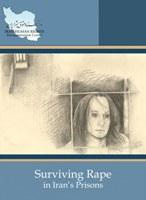As I read the account of Saeeda Siabi in an Iranian prison it became hard for me to breathe. Her descriptions of being raped in front of her 4-month-old son stopped the air in my chest. “They took me to a torture room and tied me to a bed,” she said. “I was wounded and injured, but I forgot about wounds and injuries. I thought I was fainting.”
The depiction of the violence endured by Siabi–an Iranian housewife imprisoned for more than four years because of her politically active family–must be read in its entirety to fully appreciate. But it also must be read to understand what has happened to thousands of women and men held, like her, in fetid Iranian jails over decades. Journalists, activists, bloggers–these political prisoners have suffered torture on a nightmarish scale.
There was a line in my June report, “The Silencing Crime: Sexual Violence and Journalists” about the use of rape to humiliate and control detainees in Iranian prisons. A new study by the Iran Human Rights Documentation Center, a nonprofit based in New Haven, Conn., fleshes out that assertion in compelling human detail, describing the lives that have been damaged or destroyed. The report contains the testimonies of five former prisoners who suffered or watched as others were raped. Most say that years later they are still suffering the effects of what they endured and witnessed. Siabi reports that she takes 50 to 60 pills a day to cope with her physical and psychological injuries.
One of the testimonies is from Mojtaba Saminejad, a blogger, journalist, and human rights activist who was jailed in 2004 and again in 2005. He was jailed the first time for exposing the detention of three bloggers. The second time he was detained for blogging about what he’d endured in prison, where he encountered 21 other bloggers also being held.
“These are the people who the regime is trying to coerce to make a forced confession, rat out their friends, or stop their activism,” said Renee Redman, executive director of the Iran center.
Redman told me that while rape is found in most prisons around the world, it is systematically used against Iranian detainees as a form of torture. Our Middle East and North Africa program coordinator, Mohamed Abdel Dayem, explained that interrogators use the brutality of rape to terrify the public and deter people from following the example of outspoken members of society.
Reading the testimonies in this report makes it clear that some regimes are willing to rip humans apart to prevent the exposure of their corruption. By continuing to report, though, Iran’s many journalists and bloggers demonstrate that they will not be daunted. Their courage is astounding.
